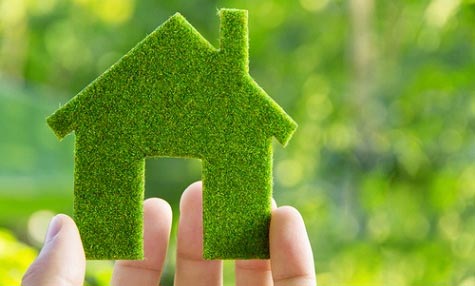Building material types intrinsic to green ratings

illustration photo
There are five key groups of requirements in a typical green building certification programme, including energy efficiency, water savings, indoor environment, sustainable sites, and materials. Apparently, materials are one of key categories that contributes to creating a green building. But in addition to that, materials help a lot in making the building energy efficient.
More than just a sustainable material
Clean Colorbond Thermatech is a favoured roofing material in many green industrial buildings in Vietnam for several reasons. First and foremost, this is a high quality product that has good performance during its long life. This feature is extremely important in manufacturing because the owner will suffer a lot if there is a leakage or if production must be delayed due to roofing replacement. Second, this kind of roofing helps reduce the heat island effect. By using a special painting technology, Clean Colorbond Thermatech helps increase Solar Reflectance Index (SRI) and therefore reduces the heat island effect quite well. If a light coloured Clean Colorbond Thermatech is used in a green building project, it helps that project score one point automatically on the LEED scale.
Energy savings with good roofing material
In addition to benefits above, a good roofing material helps save energy and improve thermal comfort in a building a lot by reducing heat gain into inner spaces. It can help reduce temperatures by up to 6 degrees celsius between exterior and interior surfaces. By simply using this roofing solution, the indoor temperature can be kept under 30 degrees celsius which guarantees thermal comfort for people without involving other cooling solutions. If a high-quality indoor environment is required, building owners can save upfront on investment and energy during operation, as they can use lower capacity air conditioning systems. Another benefit is the points earned in the LEED score for a green building that has a threshold of 10 per cent savings, where more savings score more points.
The more recycled content the better
Most people consider the quality of recycled material or material with recycled content not as good as the one made by virgin material. This can be true to some extent, but does not really match up with the green building concept. In green buildings, the more recycled content a building has, the more points the building scores. Take, for example, LEED – the US green building certification programme which awards one point for each 10 per cent of recycled content of all structural materials. So project teams and green building consultants tend to use as much recycled content as possible in their project.
However, it is hard to collect this kind of information from manufacturers and suppliers in reality because they think clients will not their products or consider them low quality if they contain recycled content. “In fact, quality and recycling are different issues”, Quang said. The quality of a certain product is strictly controlled by its manufacturer’s procedures. In most cases, the factory is ISO 9001 certified. In addition, necessary testing is in place at the factory to ensure the quality of all batches are met. At the Blue Scope factory in Phu My where Clean Color Bond Thermatech roofing sheets are made, there is a lab full of modern equipment to ascertain quality assurance and control. Samples from each batch go through different tests and are kept at factory to be referred back to in case of future problems found with the product. As a result, the product quality is ensured, although there is a certain amount of recycled content in the material used to make roofing sheets.
By By Do Huu Nhat Quang Founding member of GREENVIET
What the stars mean:
★ Poor ★ ★ Promising ★★★ Good ★★★★ Very good ★★★★★ Exceptional
Latest News
More News
- Going green to save a bundle (June 08, 2015 | 10:00)
- Green buildings: the rising trend (June 02, 2015 | 09:41)
- Green buildings – key to sustainable urban development in Vietnam (May 18, 2015 | 17:00)
- Feed-in tariffs continue to haunt green energy prospects (December 15, 2014 | 10:47)
- Turning an eco- smart dream into reality (December 09, 2014 | 11:55)
- Green products enjoy a growing presence at Vietbuild Hanoi 2014 (December 01, 2014 | 10:06)
- Country profits from green building (November 24, 2014 | 11:02)
- Firms flout enviroment laws (November 17, 2014 | 10:48)
- Energy efficient sticks and carrots (November 10, 2014 | 15:30)
- Green building - a better approach (October 28, 2014 | 16:04)


















 Mobile Version
Mobile Version